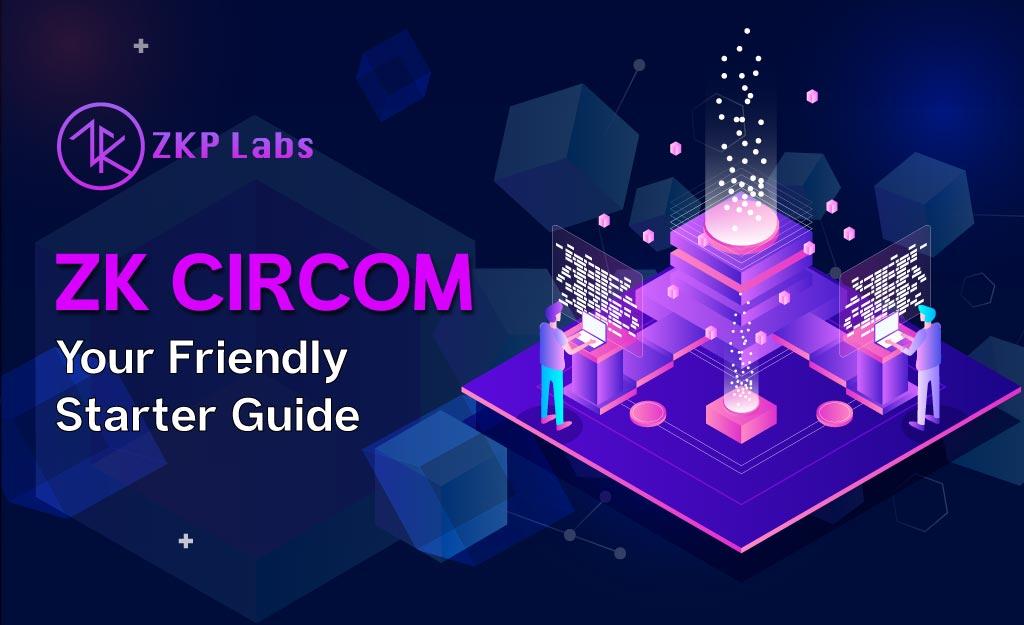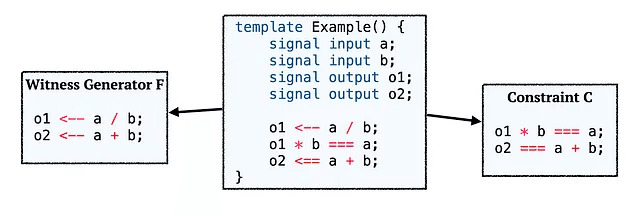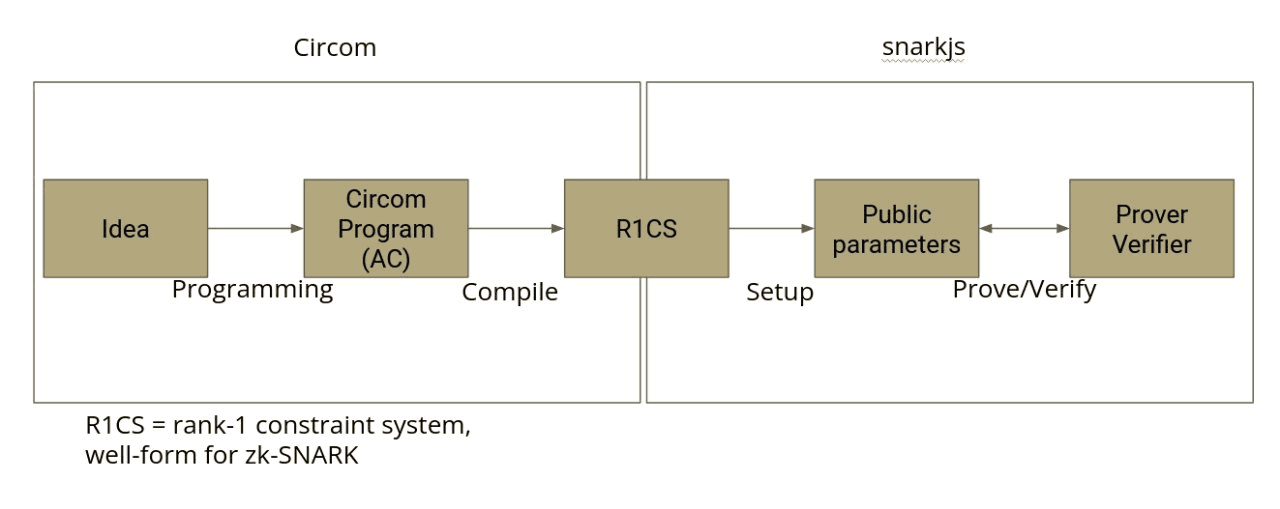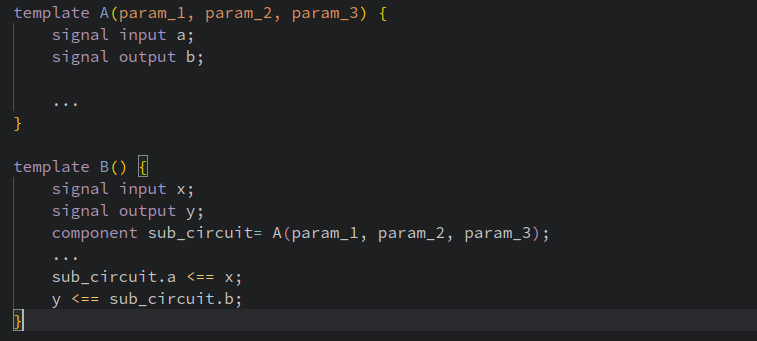Zero-Knowledge Proofs with Circom: A domain-specific language purpose
Table of Contents

Zero-Knowledge Proofs (ZKPs) have become a cornerstone in the realm of secure computation, particularly in addressing privacy concerns within blockchain applications. This article dives into the intricacies of ZKPs, focusing on their construction using Circom, a domain-specific language designed for this purpose.
I. ZKPs and Circom
In this section, we dive on a comprehensive exploration of Zero-Knowledge Proofs (ZKPs) and Circom, aiming to provide readers with a nuanced understanding of their significance in secure computation.
A. Brief Overview of Zero-Knowledge Proofs (ZKPs)
Zero-Knowledge Proofs represent a groundbreaking concept in cryptography, enabling one party, the prover, to convince another party, the verifier, of the truthfulness of a statement without disclosing any additional information beyond the validity of that statement. This powerful cryptographic tool has garnered widespread attention and adoption due to its ability to address privacy concerns in various domains, with particular relevance to the evolving landscape of blockchain technology.
Zero-Knowledge Proofs come in diverse forms, each tailored to specific requirements. Their applications extend across a spectrum of scenarios, including secure communication in smart contracts and the implementation of scalable layer-2 blockchain solutions known as "ZK-Rollups." As we dive deeper into this article, our focus will sharpen on zkSNARKs, a specific family of non-interactive ZKPs that has gained prominence in the blockchain ecosystem.
B. Introduction to Circom as a Domain-Specific Language
Circom emerges as a domain-specific language (DSL) purposefully designed for the construction of Zero-Knowledge Proofs. This section seeks to familiarize readers with the foundational aspects of Circom, highlighting its role as a powerful tool within the realm of ZKPs.
With a toolchain and ecosystem that caters to the specific demands of zero-knowledge cryptography, Circom proves to be particularly friendly within the Ethereum ecosystem. Noteworthy projects like Semaphore, Unirep, and MACI leverage Circom, emphasizing its practical application and relevance in real-world blockchain solutions.
As we journey further into the article, we will unravel the intricacies of Circom, exploring its syntax, features, and how it facilitates the creation of generic circuits, ultimately contributing to the robust construction of Zero-Knowledge Proofs.
II. Building ZKPs with Circom
This section dives into the intricate process of constructing Zero-Knowledge Proofs (ZKPs) using Circom, a domain-specific language purpose-built for cryptographic endeavors. We unravel the essential components and methodologies involved in leveraging Circom for the development of robust ZKPs.
A. Overview of Circom as a DSL
Circom, standing as a domain-specific language (DSL), plays a pivotal role in simplifying and streamlining the construction of circuits for Zero-Knowledge Proofs. Its syntax, tailored for cryptographic operations, offers a powerful toolchain and ecosystem, making it a go-to choice within the Ethereum ecosystem and other blockchain-related projects.
Notable projects such as Semaphore, Unirep, and MACI underscore Circom's practicality and efficiency in real-world applications. This subsection provides an overview of Circom's features, emphasizing its seamless integration with Ethereum and its position as a foundational element in the creation of privacy-preserving protocols.
B. Witness Generation Program and Constraint System C
The process of constructing a Zero-Knowledge Proof in Circom involves two key components: the witness generation program and the constraint system (C). The witness generation program, often referred to as the "arithmetic circuit," encapsulates the computation (F) that needs to be proven. Simultaneously, the constraint system C represents a set of polynomial equations over a finite field, providing the mathematical framework for the proof.

Source: Veridise Medium
To illustrate, consider a scenario where the computation F(x) needs to be proven equal to y. Circom enables users to express these elements within its syntax, creating a coherent and verifiable argument that can be transformed into a Zero-Knowledge Proof. This subsection navigates through the nuances of constructing these components, offering insights into the formulation of witness generation programs and constraint systems using Circom.

Source: Vu Vo - PSE team
C. Templates, Components, and Parallelization in Circom
Circom introduces the concept of templates and components, offering a modular and scalable approach to building circuits for Zero-Knowledge Proofs. Templates provide a parametric structure, allowing for the instantiation of circuits with specific values. Components, on the other hand, define arithmetic circuits with input and output signals.

Source: Vu Vo - PSE team: Template is generic circuits/reusable circuit.
The ability to parallelize computations is a notable feature of Circom, especially beneficial when dealing with large circuits. Parallelization, whether declared at the template or component level, enhances the efficiency of witness generation, a crucial step in ZKP construction. This subsection dives into the mechanics of templates, components, and parallelization in Circom, showcasing their role in creating generic circuits for robust and scalable Zero-Knowledge Proofs.

Source: Vu Vo - PSE team: Create a new instantiation of template by component keyword
As we proceed, the article will continue to unravel the practicalities of implementing Circom, providing a comprehensive guide for readers seeking a deeper understanding of ZKP construction within this domain-specific language.
III. Using Circom Artifacts for ZKPs
This section illuminates the practical application of the artifacts generated by Circom in the realm of Zero-Knowledge Proofs (ZKPs). It navigates through the compilation process, the role of the Circom compiler, and the subsequent utilization of zkSNARK generators, such as snarkjs, to produce efficient provers and verifiers.
A. Compilation of Constraints to R1CS
Once the witness generation program and constraint system are defined using Circom, the next crucial step involves the compilation of these constraints into a Rank 1 Constraint System (R1CS). This system is essentially a set of degree-2 polynomial equations over a finite field. The Circom compiler plays a pivotal role in this process, translating the expressive syntax of Circom, including the === and <== operators, into a format compatible with R1CS.
The compilation phase ensures that the mathematical constraints encapsulated in the Circom program are efficiently transformed into a format that can be further processed by zkSNARK generators. This subsection provides clarity on the intricacies of the compilation process, emphasizing its importance in preparing the groundwork for the subsequent generation of Zero-Knowledge Proofs.
B. Role of Circom Compiler and zkSNARK Generator
The collaboration between the Circom compiler and zkSNARK generators, exemplified by tools like snarkjs, is integral to the ZKP construction process. The Circom compiler translates high-level constraints into a format suitable for zkSNARKs, setting the stage for the creation of both provers and verifiers.
ZkSNARK generators, such as snarkjs, leverage the compiled constraints to produce a prover (P) and verifier (V) pair. The prover generates the Zero-Knowledge Proof, while the verifier validates its correctness without revealing any sensitive information about the underlying computation. This subsection elucidates the seamless collaboration between Circom and zkSNARK generators, showcasing the synergy required to transition from high-level constraints to practical, cryptographic proofs.
C. How to Use Generated Artifacts in a Zero-Knowledge System
With the prover and verifier in place, this subsection illustrates the practical application of Zero-Knowledge Proofs within a cryptographic system. The figure presented showcases a typical use case involving two parties, say Alice and Bob, each with a distinct role in the ZKP process.
Source: Veridise Medium
1. Alice's Role as the Prover:
Alice, armed with the witness generation program, computes the values of all signals, including intermediate ones, using the witness generator. These computed values are then passed to the prover (P), which employs them to generate a Zero-Knowledge Proof that attests to the validity of the statement.
2. Bob's Role as the Verifier:
On the other end, Bob employs the verifier (V) to check the correctness of the proof provided by Alice. The verifier utilizes the compiled constraints and the information passed by Alice to ensure the validity of the claimed statement without gaining insight into the specific values or computations involved.
In essence, this subsection brings together the components of the ZKP system, demonstrating how parties can collaboratively engage in cryptographic transactions while preserving the confidentiality and integrity of sensitive information. It emphasizes the role of the artifacts generated by Circom in facilitating a robust, privacy-preserving Zero-Knowledge Proof system.
As we conclude this section, the article provides readers with a comprehensive understanding of not only the construction but also the practical implementation of Zero-Knowledge Proofs using the artifacts generated by Circom. This knowledge equips individuals with the tools to navigate the intricacies of privacy-preserving cryptographic protocols within the evolving landscape of blockchain technology.
Conclusion:
In conclusion, this article has unraveled the intricate world of Zero-Knowledge Proofs and Circom, shedding light on their construction, components, and application in blockchain technology. As these technologies continue to evolve, their role in ensuring privacy and security within the digital landscape becomes increasingly indispensable.
About ZKP Labs
ZKP Labs is a non-profit organization that focuses on building a vibrant and supportive community in Southeast Asia dedicated to the advancement of Zero-Knowledge Proof (ZKP) technology. Through events, workshops, and training programs, we strive to create an environment that fosters collaboration, knowledge-sharing, and growth, empowering community members to contribute to the development and adoption of ZKP.
Categories
Event Recap
5
Zero Knowledge Proofs 101
32
Top Posts
1
How to start learning ZKPs as a beginner?
02 March 2023
2
Announcing the ZKP Advocacy Program Powered by Mina Foundation: Your Path to Zero-Knowledge Mastery
24 October 2024
3
What Jobs Can You Do About ZKPs?
15 March 2023
4
A Beginner's Guide to Understanding the Different Types of Zero-Knowledge Proofs
24 February 2023
5
Cơ chế và tác động của hành động làm giá trong thị trường tiền điện tử
21 December 2023
6
Khi Nào Zero-Knowledge Proofs Có Ích?
17 March 2025
7
Phân tích lỗ hổng lớn trong mạng zkEVM của Polygon
06 December 2023
8
Phân tích hành động lái giá: Tại sao hầu hết giá của dự án đều giảm?
21 December 2023
9
Hiểu về Plonky2: Một Framework SNARK hiệu suất cao dựa trên Rust
27 March 2025
10
Tìm kiếm cơ hội đầu tư vào Blockchain mô-đun
21 December 2023
Tag
Zero Knowledge Proofs


